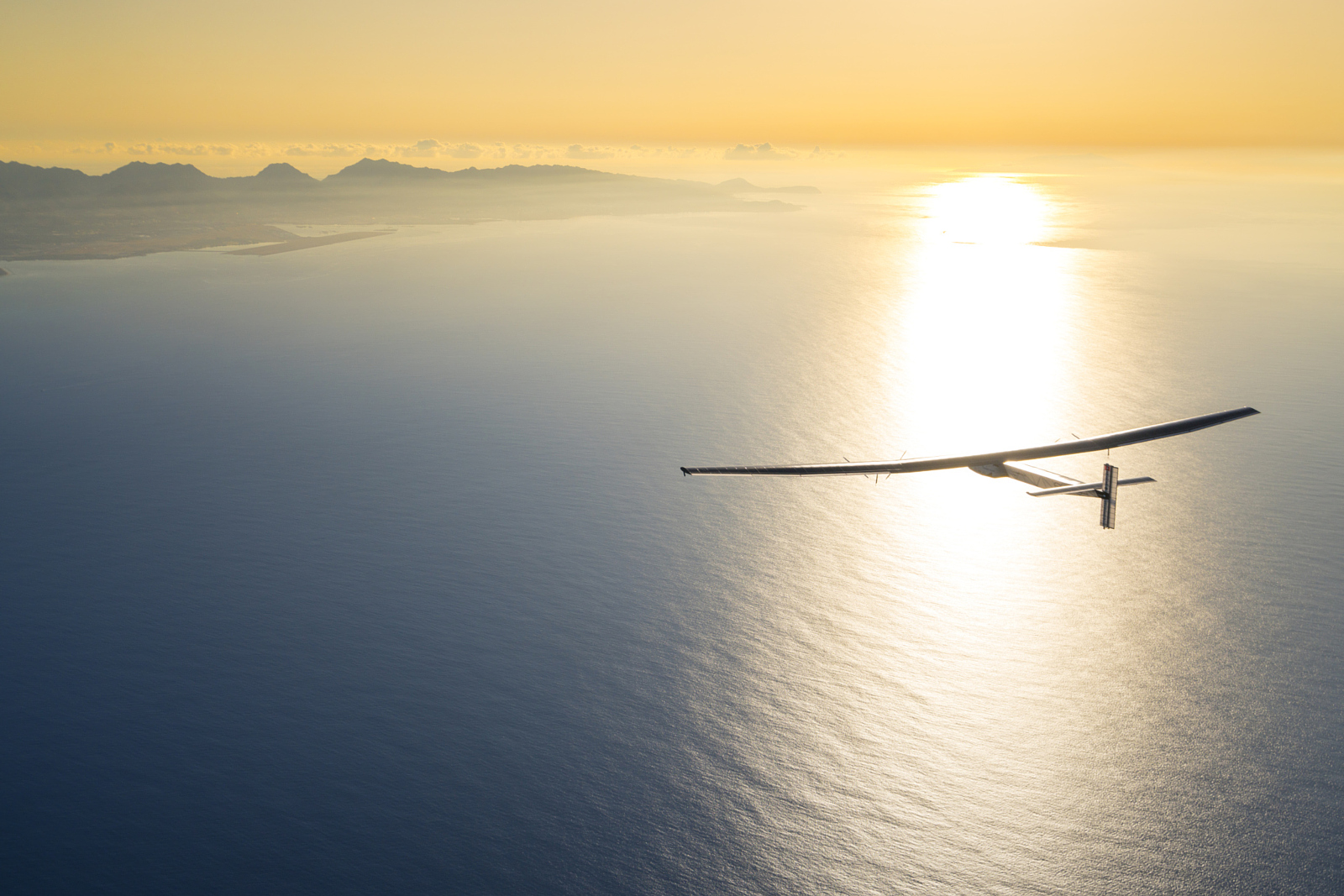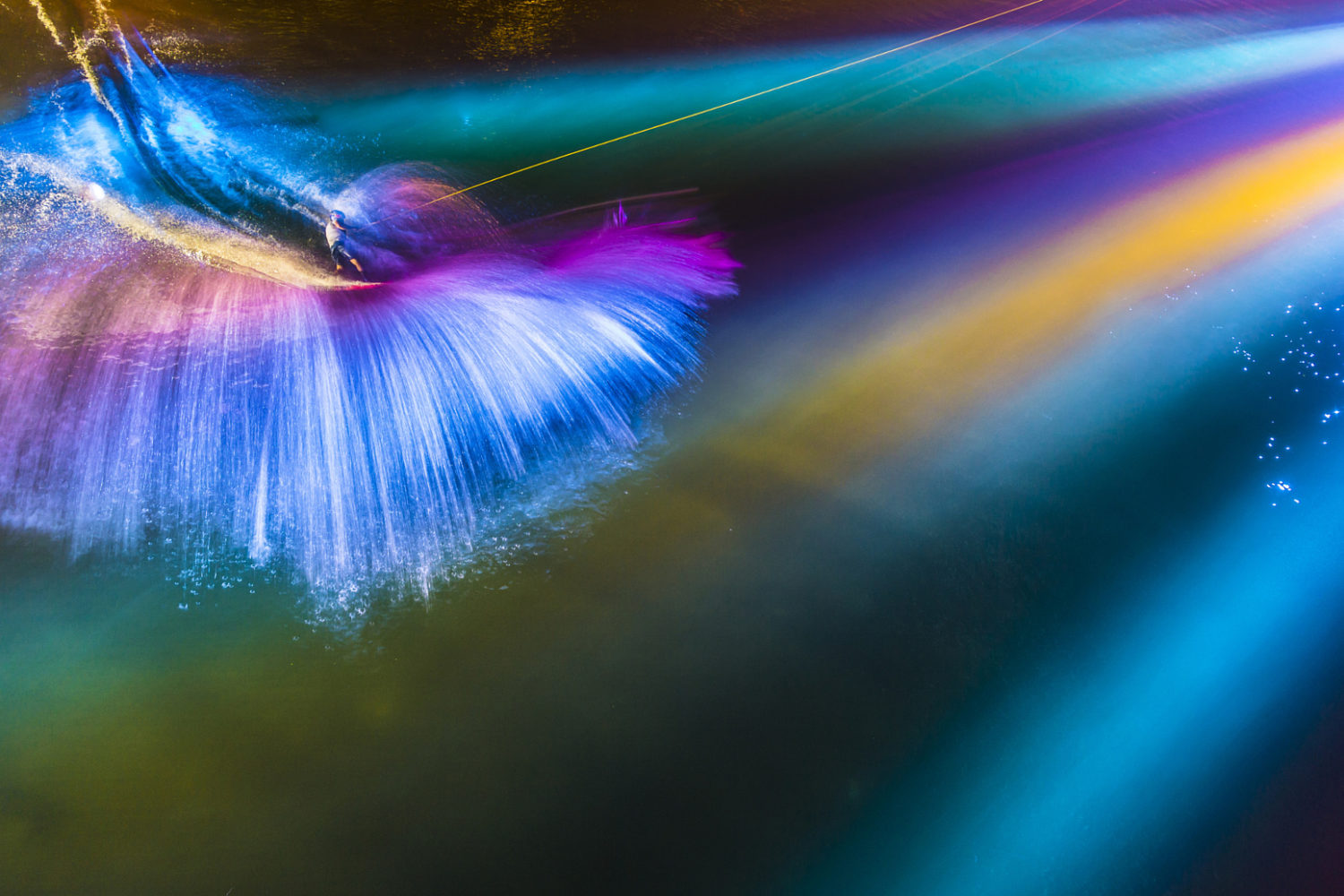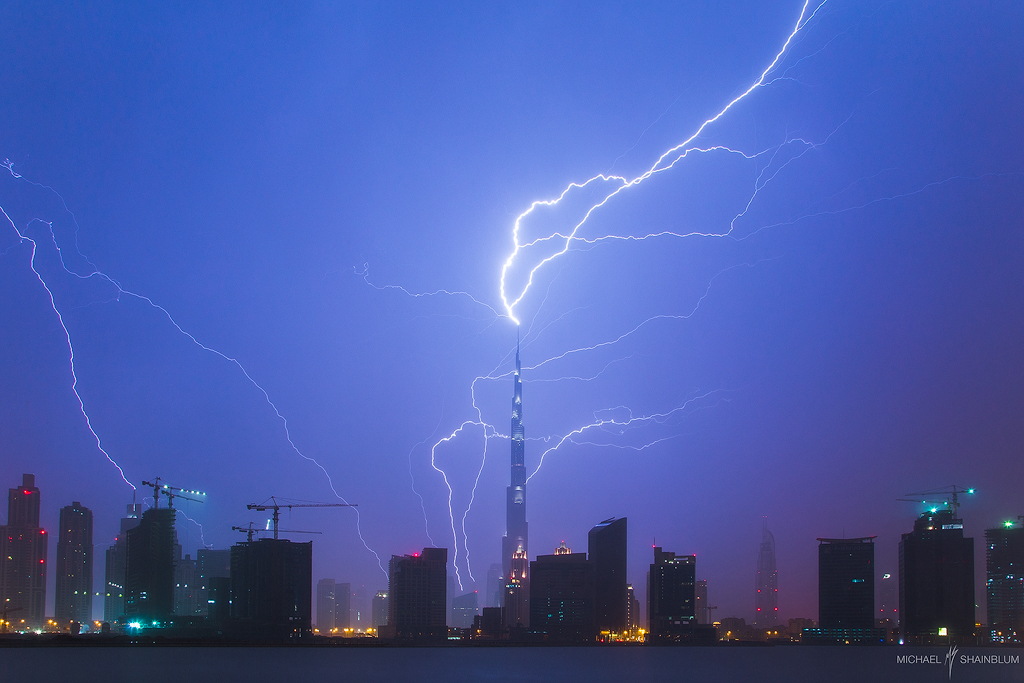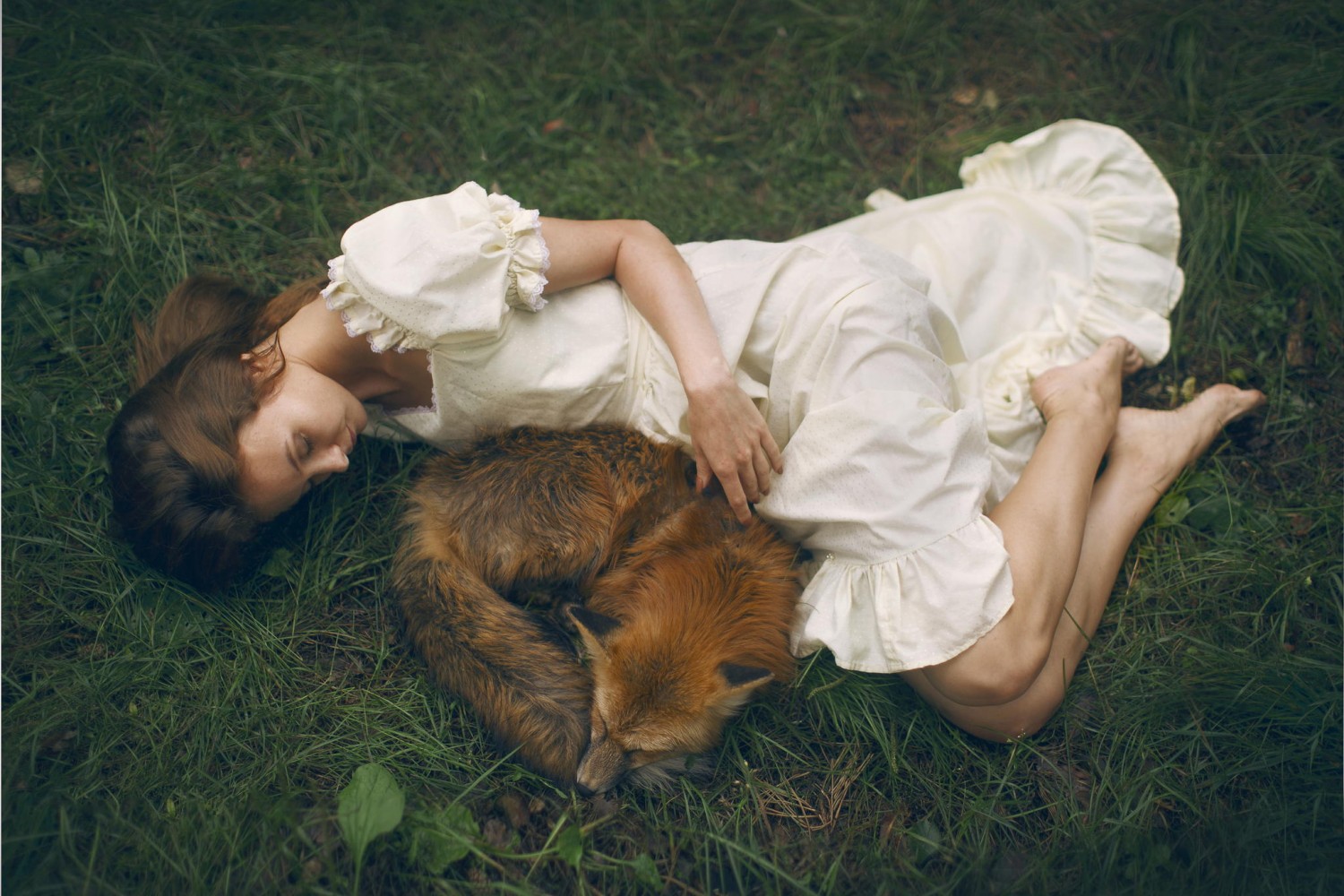We recently spent a day behind the scenes with the photographers of Solar Impulse, a project working to make clean, solar-powered air travel a reality. The team just completed the first ever around-the-world solar flight this week when it landed, the Solar Impulse 2, in Abu Dhabi, where the photovoltaic cells-powered plane first set off on its 40,000-kilometer circumnavigation over a year ago. Solar Impulse 2’s year-long mission included stops in India, Japan, Hawaii, California, Spain, and Egypt, and flying over each region’s most breath-taking sights.
We had the privilege of speaking with Solar Impulse’s lead photographer, Jean Revillard, who leads the direction of all photography found on Solar Impulse’s 500px account, right before the plane’s last flight. Revillard shared how he ended up in the enviable position of shooting aerial photos of a solar airplane flying around the world, along with his gear, insider techniques, and stories behind his favorite photos.
Hi Jean! Can you introduce yourself?
I’m Jean Revillard, responsible for all of the pictures taken at Solar Impulse, which includes the plane’s construction, its life on the ground and in the air, the pilots, the team, and the events. It’s been six years since I first arrived at Solar Impulse. In 2010, I was working on Solar Impulse but for Altran, one of the project’s partners. Bertrand Piccard, a Solar Impulse co-founder, had discovered my work when using my “Calais Jungle” pictures for his conferences. He asked me to photograph the first solar night flight of Solar Impulse 1 in 2010 and I never left!
I was present during all the Solar Impulse 1 prototype missions and am now covering the Solar Impulse 2 flights. At the beginning, for the flights through Switzerland, Belgium, and Morocco, I worked alone, but the 2013 Across America mission and the 2015-2016 Round-the-World adventure required me to bring photographers from my agency, rezo.ch, along.
What are a few things you love most about your job at Solar Impulse?
I would say the main thing I love is being able to conceptualize images. The flights at Solar Impulse are always sequential and nearly identical: pilot equipment, roll-out, engine run-up, takeoff, landing, and airports and runways are very similar. So what’s great is to come up with ideas to make sure we can create Solar Impulse “postcards” in each destination. The goal is to make the viewer really feel the travel aspect.
A flight operation is always complex and a lot of work as it involves coordinating our two founders and pilots [Bertrand Piccard and André Borschberg], our marketing department, the airport operations or ATC, our mission control center, our ground crew, the multimedia team providing the live stream on solarimpulse.com. But we’ve made incredible things together: putting camels on the runway in Morocco, eagles in Abu Dhabi, flying with a Bellanca in Hawaii, shooting over the Golden Gate bridge and the Statue of Liberty; many of those pictures are already on our 500px page.
The second thing I love is preparing those photos. You always start with an image in your head for that “postcard,” but then you have to make it happen and prepare every aspect of it, since you know that on the day you will only get a few seconds and one only opportunity to take the shot. I love that preparation phase, spotting places on Google Earth, discovering them on the ground, calculating angles, the sun’s position, what type of light there will be, choosing the right lenses for the job. I’ve started using Photopills and Google Maps a lot this year and they help me a lot.
Around the airport I always try to find ethnographic elements to show “where” the plane is: a cactus in Arizona, surfers and beaches in Hawaii, solar plants in Spain. Once the plan is ready, I can send a more precise plan to the pilot and mission control to help guide him during the flight.
This preparation is hard work and we often get very little time to prepare. But at the same time it’s a great opportunity to discover new places, which I often do on my bicycle, around the airports on our round-the-world journey. The Golden Gate Bridge, the Statue of Liberty, most of the time these are amazing landscapes.
What are some of your biggest learnings as a photographer during your time at Solar Impulse?
It’s been a challenging experience because we take off and land at night; everything goes fast and there is no time for experimentation, and I have to use the least amount of equipment possible to be as flexible and light as I can. I started working with mirrorless cameras when they first appeared on the market and I now use the Sony Alpha 7Rii, which fits the job perfectly. It’s small and light, has great sensitivity, the live view provides a “what you see is what you get” perspective, and the stabilization is also great for low lighting and shooting from a helicopter.
I remember being in Morocco in 2012 and having a difficult time shooting at night; now, with these new cameras, we’re getting amazing results. If you look at the picture of the Statue of Liberty, it’s amazing how we were able to push the Sony to its limits in terms of shooting conditions (night, helicopter, fast movements, no other lighting equipment) and still get sharp images even on a dark background like the New York Harbor.
I love the way I have had to adapt and scale down my equipment but not my expectations; I still want to get the best images and memories out of each flight. The difficulties taught me to prepare for every shot a lot, and to work in a minimalist style.
What’s in your bag when you’re on the runway?
I always keep my Alpha 7Rii on me. Of course, we have a lot of equipment with us, but I would say my favorite Sony lenses are:
- 16-35mm — For shooting landscapes from the sky. It’s even better when André Borschberg (one of the Solar Impulse pilots) is piloting the helicopter because he knows the plane so well that he can get close enough for me to get great shots.
- 55mm 1.8 — Great for the intimacy it offers me with the pilots and it also gives a cool cinematographic look.
- 35mm 1.4 — I use it a lot on the runway because it’s amazing for low light conditions.
We had to give up flashes and heavy lightning equipment because we work with video teams nearby, so we only use LED lamps. I always have one with me to put on a tripod. It’s the kind of equipment I used to take this picture on the runway in Nagoya, Japan during our departure to Hawaii when André was setting off to cross the Pacific without a drop of fuel.
We also have to work with communication systems like Wi-Fi relays and antennas, which, with the years, have boiled down to small Xcom Global 3G chips. Live transmission of the pictures from the helicopter to the ground is really important for us so that our communication teams can make them available ASAP to the press, on solarimpulse.com, and on our social networks.
What advice would you give to new photographers?
To me, photography is meant to “say” something, it must have an angle and a message. I also think an interesting image is one that doesn’t exist, it’s never been done before.
This actually sounds like what Bertrand Piccard often says about Solar Impulse: the round-the-world is not an adventure meant to break records, it also needs to be useful by spreading a clear message about clean technologies and how we can use them to build a better world.
I also feel like a lot of photographers nowadays are influenced by what they see on the web or social media. It’s like a mimetic force that leads you to only imitate and no longer innovate. It’s a good idea to come back to the history of photography, music, classic art, painting, museums — to take some distance from the online trends.
What is your next challenge with Solar Impulse?
I think that now that we’re getting closer to the end of the round-the-world solar flight, and the return to Abu Dhabi, I’m starting to think more and more about the last landing [See photo of the landing below!]. The difficulty is getting that dream picture; for instance, facing the aircraft at landing from a helicopter is very difficult to get for obvious airport safety reasons. But maybe one of the best pictures will simply be from the spectator’s point of view, from the ground, looking at that aircraft completing its zero-fuel journey around the world.
Revisit the Solar Impulse flights through recorded live stream footage from the plane’s cockpit cameras. And, of course, discover more pictures on their 500px account.
















Leave a reply